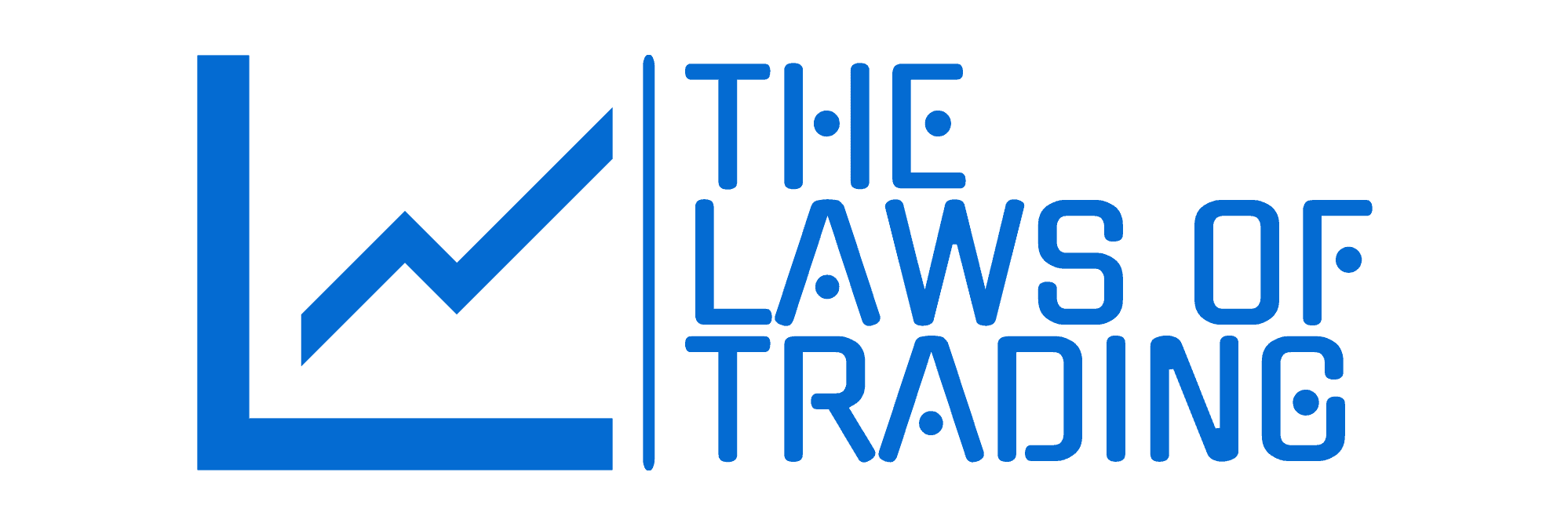Table of Contents
Toggle
Swing Trading Definition: Hey there, aspiring traders! If you’re new to the world of trading, you might have heard about swing trading—a method that can help you catch market swings for profit without needing to sit in front of your screen all day.
In this guide, we’ll walk you through an Easy Swing Trading Strategy for Beginners, designed to simplify your journey into the trading universe.
What is Swing Trading?
So, what exactly is swing trading? Unlike day trading, where you buy and sell within the same day, swing trading involves holding onto stocks or other financial instruments for several days or weeks to catch short- to medium-term price movements.
The Basics of Swing Trading
To understand more clearly, let’s delve into the fundamentals of swing trading. This trading style relies on identifying short-term price momentum in the market and capitalizing on it by entering and exiting positions at opportune moments.
How to Start Swing Trading?
Now that you grasp the concept, it’s time to prepare your arsenal for the battlefield of trading. Here’s what you need:
1. Choosing the Right Brokerage
First things first, you’ll need a reliable brokerage platform to execute your trades. Look for one with low commissions, a user-friendly interface, and tools for technical analysis.
2. Understanding Technical Analysis
Technical analysis involves studying price charts and patterns to predict future price movements. Familiarize yourself with common indicators like Moving Averages, Volume, RSI, and MACD.
3. Define Risk Management
Risk management is crucial in swing trading to protect your capital from substantial losses. Set stop-loss orders and determine your risk-reward ratio for each trade.
Swing Trading for Beginners
Now, let’s discuss the main thing—the easy swing trading strategy tailor-made for beginners like yourself.
1. Identify Market Trends
Before entering a trade, determine the direction of the prevailing trend. You can use moving averages or trendlines to spot upward or downward trends.
2. Look for Pullbacks or Corrections
Once you’ve identified the trend, wait for pullbacks or corrections against the trend. These retracements provide entry opportunities at better prices.
3. Confirm with Indicators
Use technical indicators like RSI or MACD to confirm the strength of the trend before placing your trade. Look for divergence or convergence signals for added confirmation.
4. Set Your Entry and Exit Points
Decide on your entry and exit points based on your risk tolerance and the potential reward of the trade. Set stop-loss orders to limit losses and take-profit targets to secure profits.
Easy Swing Trading Strategies for Beginners
Swing trading can be a great way for beginners to get a start in the world of trading. Here are some simple strategies to get started:
1. Trend Following:
This strategy involves identifying the direction of the prevailing trend (upward or downward) and jumping in on trades that align with that trend.
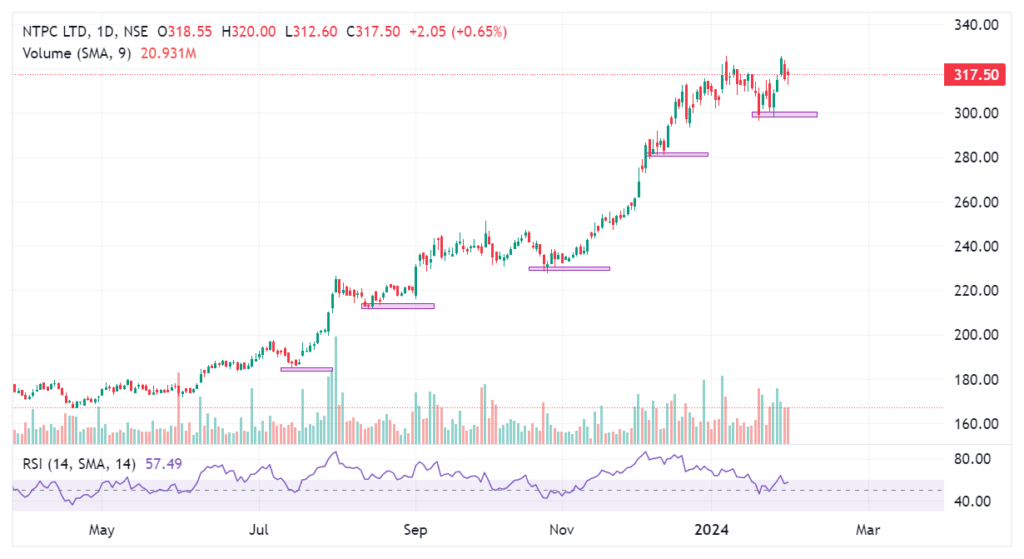
New trader should analyze trending stocks and spot trends and make informed trading decisions.
2. Breakout Trading
Breakout trading involves entering a trade when the price of a stock or other financial instrument breaks out of a defined range or pattern.
Check below image for example of breakout and retest-
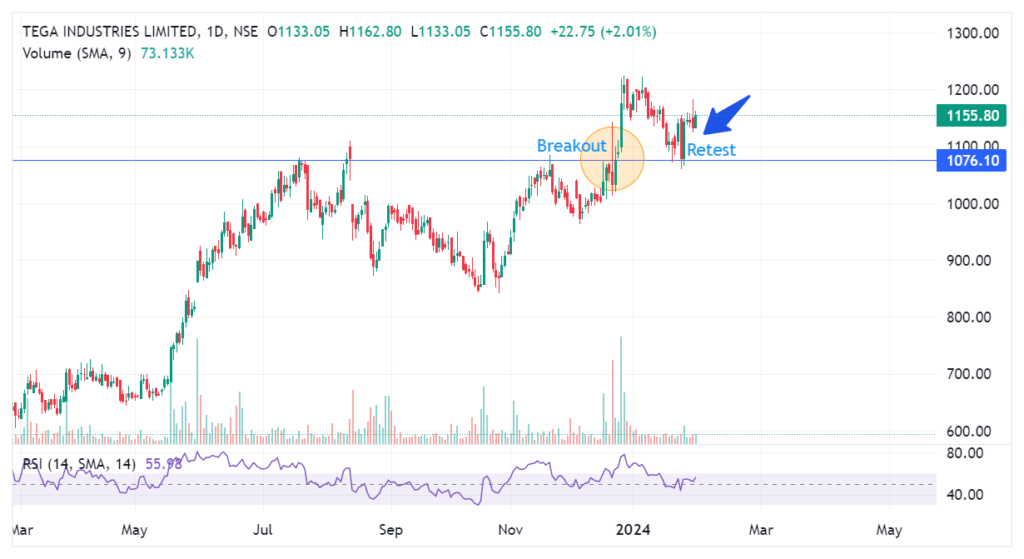
Beginners can look for consolidation patterns like triangles or rectangles on price charts and enter trades when the price breaks above or below these patterns.
3. Pullback Trading
Also known as “buying the dip,” this strategy involves waiting for a temporary pullback or correction against the prevailing trend before entering a trade.
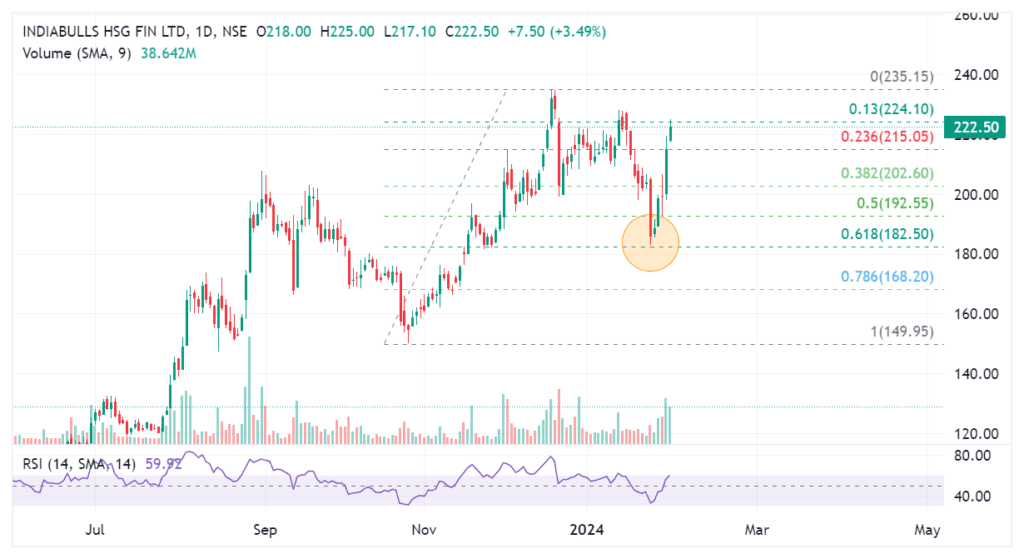
As you can see, this is an example of perfect pullback with Fibonacci Retracement exact from golden ratio 61.8.
Beginners can look for opportunities to buy stocks at a discount when they temporarily dip in price during an uptrend.
4. Support and Resistance Trading
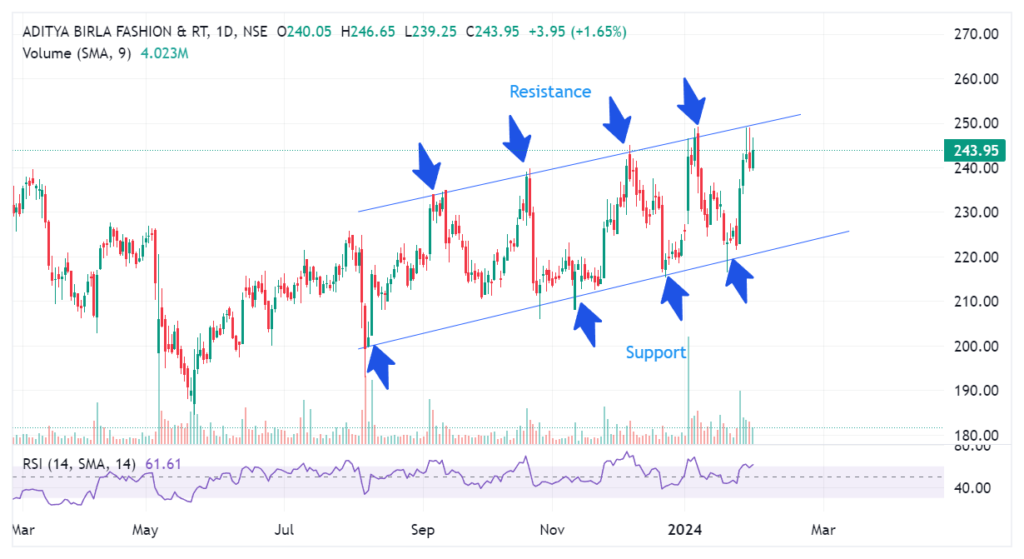
Support and resistance levels are key price levels where the price of a stock tends to bounce off or reverse direction. Beginners can look for opportunities to enter trades when the price bounces off a support level (buying) or reverses direction at a resistance level (selling).
5. Moving Average Crossover
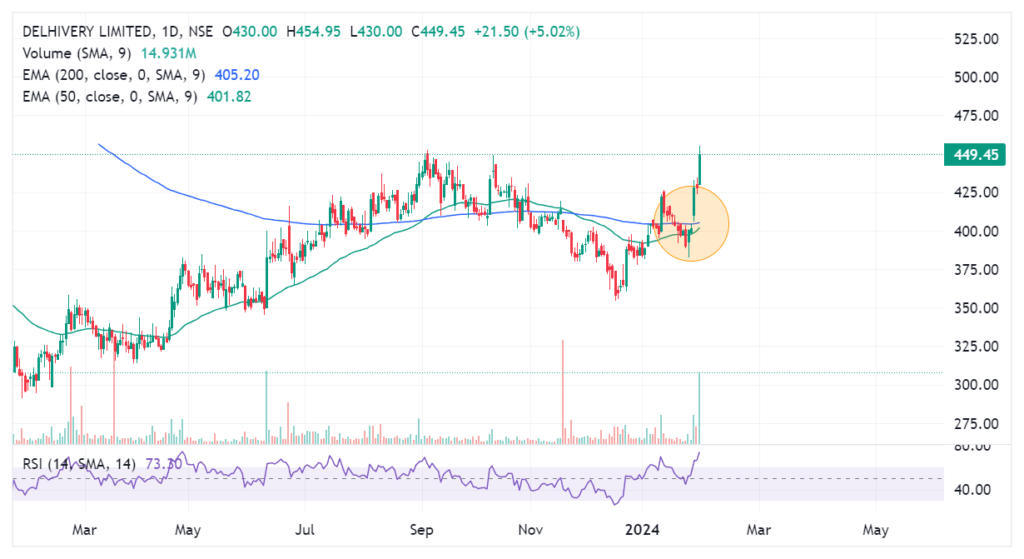
This strategy involves using moving averages of different time periods to identify changes in trend direction.
As shown in above image, 50 EMA is about to crossover 200 EMA to make happen Golden Crossover. You can consider buying with defined risk management.
Beginners can look for “golden cross” signals, where a shorter-term moving average crosses above a longer-term moving average, as a bullish signal to enter long trades, and “death cross” signals, where the opposite occurs, as a bearish signal to enter short trades.
These are just a few simple swing trading strategies that beginners can consider exploring.
Remember to always do your own research and practice proper risk management when trading in the financial markets.
Tips for Successful Swing Trading
Here are some additional tips to help you navigate the waters of swing trading smoothly:
Stick to Your Plan: Develop a trading plan and stick to it religiously, avoiding impulsive decisions driven by emotions.
Stay Informed: Keep yourself updated with market news and events that could impact your trades.
Practice Patience: Patience is key in swing trading. Wait for the right setups and avoid chasing trades out of FOMO (fear of missing out).
Conclusion
In conclusion, swing trading offers a beginner-friendly approach to profiting from short- to medium-term price movements in the market. By following a simple strategy and staying disciplined, you can set yourself on the path to trading success.
FAQs
Swing trading involves holding onto positions for several days or weeks to capture short- to medium-term price movements, while day trading involves buying and selling within the same day for quick profits.
The amount of capital needed varies depending on your risk tolerance and the assets you trade. However, it’s recommended to start with a capital that you can afford to lose without significant financial strain.
Yes, swing trading can be suitable for beginners as it doesn’t require constant monitoring of the markets like day trading. However, it still requires a solid understanding of trading principles and risk management.
You can exit a swing trade based on predetermined criteria such as reaching your profit target, hitting your stop-loss level, or when the market conditions invalidate your initial trade setup.
Yes, swing trading strategies can be automated using trading algorithms or bots. However, it’s essential to thoroughly backtest and optimize your automated strategy before deploying it in live markets.
